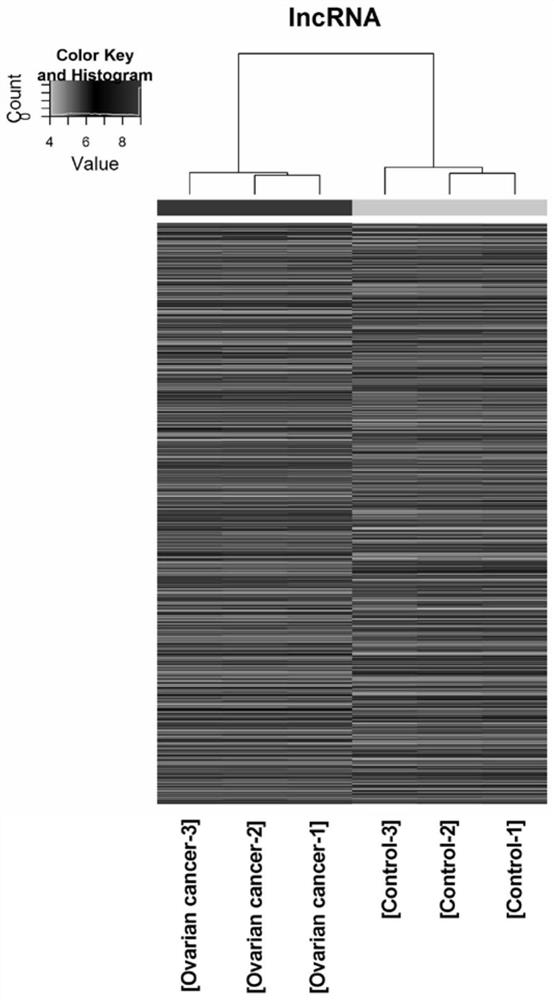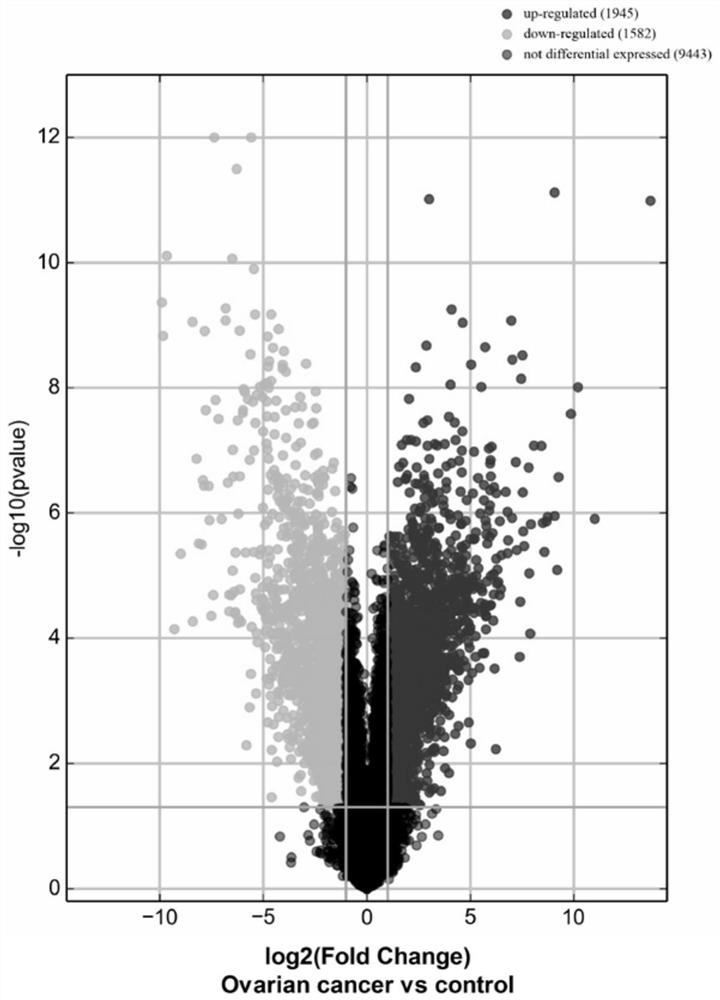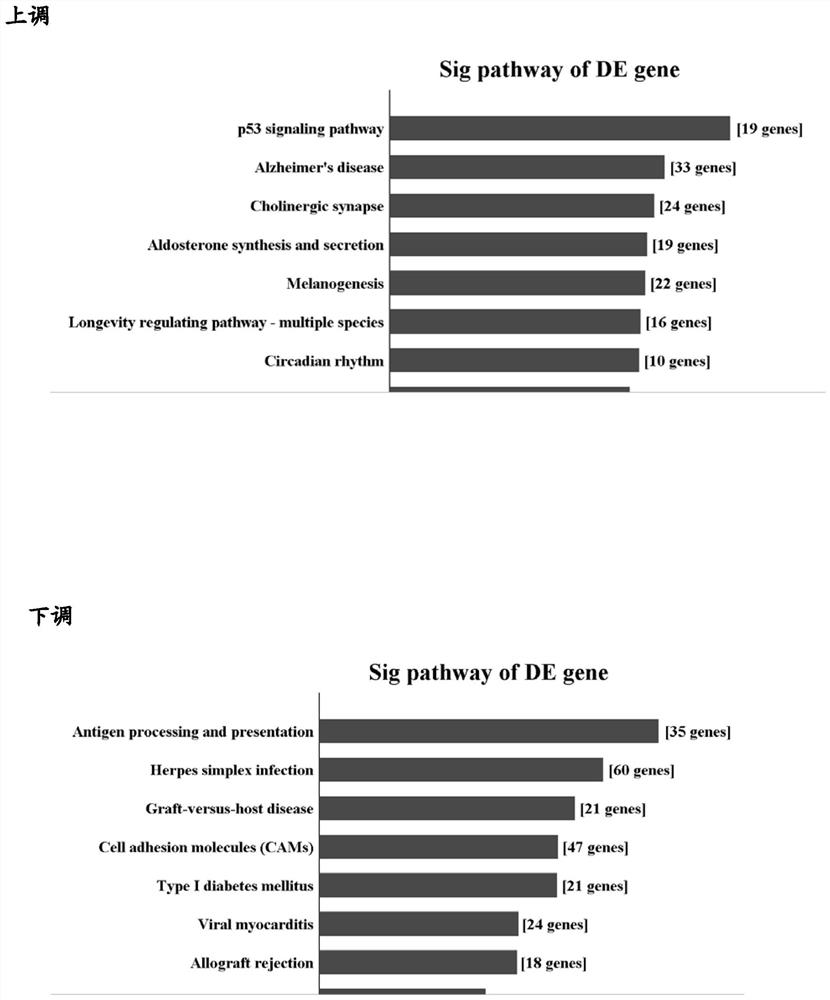Application of siRNA of long non-coding RNA SMAD5-AS1 in the treatment of ovarian cancer
A SMAD5-AS1, ovarian cancer technology, applied in the field of bioengineering, can solve problems such as unseen research
- Summary
- Abstract
- Description
- Claims
- Application Information
AI Technical Summary
Problems solved by technology
Method used
Image
Examples
Embodiment 1
[0025] Example 1 confirms that LncRNA SMAD5-AS1 is upregulated in ovarian cancer
[0026]We used gene chip technology (GeneChip Exon 1.0 ST Arrays from Affymetrix, Inc.) to detect the expression profile of lncRNAs in cancer tissues of ovarian cancer patients (Table 1). The lncRNA chip includes transcripts annotated as lncRNA from RNAdb, Refseq, NCBI Gene, UCSC Gene and other authoritative databases, and the data is comprehensive and reliable. Using bioinformatics analysis methods for data analysis, we selected lncRNAs that were increased or decreased by more than 2 times as differentially expressed genes. Thus, we screened out 1945 lncRNAs that were significantly increased and 1582 differential lncRNAs that were significantly decreased in ovarian cancer patients. The results are shown in the hierarchical clustering diagram ( figure 1 ) and volcano map ( figure 2 ) shown. We also performed pathway analysis related to differential lncRNAs. The results revealed that these ab...
Embodiment 2
[0030] Example 2 confirms that LncRNA SMAD5-AS1 siRNA-1 and siRNA-2 inhibit ovarian cancer cell progression
[0031] We cultured human epithelial ovarian cancer cell line SKOV3 for experiments, and used RPMI1640 medium containing 10% FBS for routine culture at 37°C, 5% CO 2 cultured in a saturated humidity incubator. Grouped as follows: SMAD5-AS1 siRNA-1 (shown in SEQ ID NO.2) transfection group, SMAD5-AS1 siRNA-2 (shown in SEQ ID NO.3) transfection group, siRNA-NC (shown in SEQ ID NO.4) Indicated) transfection group. Real-time fluorescence quantitative PCR was used to detect the expression level of SMAD5-AS1 in each group of cells.
PUM
 Login to View More
Login to View More Abstract
Description
Claims
Application Information
 Login to View More
Login to View More - R&D
- Intellectual Property
- Life Sciences
- Materials
- Tech Scout
- Unparalleled Data Quality
- Higher Quality Content
- 60% Fewer Hallucinations
Browse by: Latest US Patents, China's latest patents, Technical Efficacy Thesaurus, Application Domain, Technology Topic, Popular Technical Reports.
© 2025 PatSnap. All rights reserved.Legal|Privacy policy|Modern Slavery Act Transparency Statement|Sitemap|About US| Contact US: help@patsnap.com



